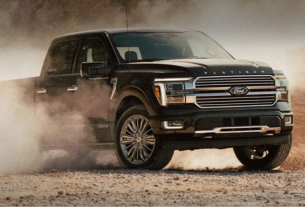When launched way back in 2008, the i20 hatchback was a car that gave birth to a new segment in our market. However, back then, a lot of customers weren’t willing to pay a premium for a hatchback – but fast-forward to today, and Indian customers seem to be lapping up anything that offers good comfort, space and comes well equipped. The new i20 aims to be a lot better than the car it replaces, so we take it for a drive you give your our opinion on what’s to like and what’s not to like.
Sharpness we like
The new i20 is all-new, and shares no resemblance with the model it replaces. It is based on the brand’s new global design philosophy – so you get a sharper silhouette, modern detailing and sporty stance. The dual-tone i20 we drove came with a gloss black grille at the front, side skirts, wing mirrors, roof and a rear skid plate. The headlights looks sleek and the nicely raised bonnet give it the face it needs.
The glass window incorporated in the C-pillar give it a unique look, and the added chrome bits, along with the 16-inch wheels, give it a sporty side profile. There are bold creases on the sides too. At the back, you’re bound to fall for the car, for its distinctive, Z-shaped tail lights give the rear an appeal many behind the car will admire. There’s even a chrome strip running in between the tail lights, something a lot of Indian buyers love.
In its segment, along with the Tata Altroz, it is the sharpest-looking – which is the very first point that’s going to lure buyers to Hyundai dealerships. And it really oozes premiumness.
Same story inside?
The cabin too, is all-new. It looks so much tidier and simple, with very few switches around, but comes brimming with features. The quality sees a step-up in terms of fit and finish. You get some lovely soft-touch plastics in certain areas, and there’s nothing that matches its build quality in its segment. Hyundai’s been ahead of the game as far as equipping their cars are concerned. It features a 7-speaker Bose audio system, an all-digital instrument cluster, a wireless charging pad with cooling function, 6 airbags, digital instrument cluster, climate control, 10.25-inch touchscreen and BlueLink connectivity. The i20 is now longer and wider, and that means more room on the inside. There’s lots of legroom at the back, but headroom will be a bit of a bother for tall occupants. The front seats are big and provide good comfort.
A question of power
As with all other new Hyundai cars models, the i20 too, will be sold with multiple engine and gearbox choices. Those looking for petrol-engined versions: there’s a 1.2-litre, naturally aspirated petrol and a 1.0-litre turbo petrol engine. Sticklers for fuel economy have a diesel unit in the form of a new 1.5-litre engine. The 1.2-litre engine is great for regular use and is mated with a manual transmission and an iMT gearbox.
However, we drove the one with the 1.0-litre engine that makes 118bhp, and the motor enjoys being revved. It also seems to be a rather perfect fit for the car’s weight and platform. It accelerates quickly and is fast for the most part. And then there’s the convenience of using its 7-speed DCT. On the dynamics front too, the car has seen an improvement. It stays planted at high speeds and ride quality over rough tarmac is good too. The handling is predictable and the car remains composed at high speeds. Its steering offers good feel too and refinement levels are impressive.
Go ahead then?
The pricing is crucial. And at around ₹ 12 lakh (on-road), for the top-end diesel variant, it really does get you thinking. But having driven the car, we can tell you it looks fantastic, comes with a good chassis and suspension setup, and with a long list of features, its engines and gearboxes, it really is hard to resist. The i20 is easily the segment-best at the moment. Also, grab the latest info on the Kia Seltos, only at autoX.





